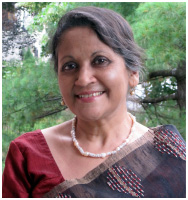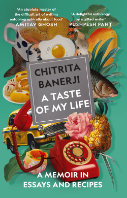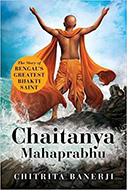Double Roti
The very first sandwich served to me in the United States petrified me with its size and heft. I had just arrived from Calcutta and was going to spend ten days in a Pennsylvania town with one of my uncles and his American wife, before traveling to Cambridge to start graduate school. This, my uncle had written to my anxious parents, would be the easiest way for me to segue into a new life.
The day after my arrival, he took me out to see "America" at close quarters. After a long, pleasurable morning replete with historical sights and novel, sometimes eye-popping, encounters — the dazzling, escalator-laced interior of an American department store was a splendid antidote to the musty, neon-lit, static shops I was familiar with — my uncle decided it was time to eat. We went to one of his favorite restaurants, famous for its sandwiches.
The long list of options in the menu was enough to make my head whirl. Until then, my idea of a sandwich was two pieces of thin-sliced, crustless, buttered white bread — yes, bread in the western sense was always as white as the Europeans who had introduced it to India, and if one wanted a whole wheat product, one could always eat a homemade chapatti — that enclosed either vegetables like sliced cucumber and tomatoes, or boiled eggs that had been sliced or mashed, or, the most opulent option (available usually in restaurants), sliced chicken. When sandwiches were made at home, my mother would sometimes strive for variety by frying an egg until the yolk had set solid and put it between the slices of bread. Or she made an omelet, and used that as a filling, trimming off the untidy ends. Fillings of meat like ham or beef, regardless of expense, were unthinkable in observant Hindu homes like ours, and sliced cheese was not commonly available in the markets in those days.
The one unvarying assumption, however, was that the sandwich was either a light accompaniment with afternoon tea — as we had learned from the British — or a convenient snack, along with fruits and something sweet, to put in the lunch boxes we carried with us to school. In sixties' Calcutta, there was no such thing as school lunch. We ate our main meal of the day — the Bengali lunch consisting of rice, dal, vegetables, and fish or meat — at home, at the ungodly hour of eight-thirty or nine, before boarding the school bus. The contents of our modest-sized lunch boxes therefore provided sufficient sustenance for the rest of the day. Outside the school, the sandwich, a quintessentially British item, also carried an aura of westernized elitism. Teatime guests in ordinary Bengali homes like mine were likely to be offered samosas, fritters and sweets, not sandwiches. There was no need for the sandwich to change its identity from snack to meal, as it had in the West, even though the term itself, like many other foreign words, had become incorporated into most Indian languages. In the early days of colonial rule however, when Indian servants were first taught to prepare this peculiar item for their European masters, and long before Indian families added it to their menu, they referred to it as "double roti."
That first afternoon in America I sat in the restaurant with my uncle, scanning a long list of sandwiches, and found many terms I couldn't comprehend. Even bread wasn't simply bread. Yes, I knew about buns and rolls, but words like rye and pumpernickel totally fazed me. My uncle, a food enthusiast from his college days in Calcutta, sat grinning at my bewilderment. He was willing to explain but he wouldn't order for me. This, in his opinion, was one of the many moments in America where I had to be adventurous, jump into the unfamiliar and find my balance. Not being too fond of boiled eggs, I decided to order the chicken salad sandwich which seemed the least intimidating option after egg salad. When the waitress arrived with our plates, my uncle's pastrami on rye failed to elicit the expected questions from me. I was dumbstruck by the dimensions of the item sitting before me.
Everything about it contradicted the fundamental notion of the sandwich as something light and simple. Even the slices of bread, although familiarly white, were three times the size of any sliced bread I had eaten in India. The sandwich had been cut diagonally to make two triangles and each could have sufficed as a filling meal. I saw the greenery poking out from the sides and discovered that lettuce was a common addition to a sandwich. As for the filling bursting out from between the bread, it was literally worlds apart from the delicate slices of meat I had been expecting. The American chicken salad, with its chopped chicken, chopped celery, and profusion of mayonnaise, challengingly flaunted its unfamiliarity. I was prepared to believe it was tasty, but the wet, mushy texture did not invite me to find out — until I screwed up my courage and took a bite.
It was a memorable meal. As I had expected, half of the sandwich, not to speak of the French fries on the side, was enough to contain my hunger. The lushness of the chicken salad, so different from the chaste pieces of chicken I had anticipated, lingered in my mouth like a strange, sinful pleasure while I realized, with some embarrassment, that the trick of holding and eating a giant American sandwich without making a mess was something I would have to learn by practice. But what I have discovered since then is that responding to the initial challenge — urged on by my uncle's quizzical smile — brought me a permanent source of gratification. Countless American sandwiches later, including the burgers, the BLTs, and the ones filled with thick-piled slices of cured or roasted meats, it is the simple chicken salad sandwich that remains my favorite, provided the mayonnaise is applied with discretion.
That afternoon, my sandwich also brought home to me the reality of America as the proverbial land of milk and honey. Looking around at the customers, I saw that most of them were ordinary, middle-class folk, not swanky members of the elite. Yet, they could easily afford to pay for lavish portions of high-protein, high-calorie food. Some of their meals were far bigger than my plate of sandwich. Chicken, my uncle told me, was ubiquitous in the American diet, being a relatively cheap source of protein. I thought about the land I had left behind. For middle class Indian families like mine, chicken was an expensive commodity, a treat reserved for special occasions or for feeding a convalescent. I remember one friend telling me that in her house the price of a chicken was never taken out of the regular food shopping budget. Her mother collected the money she got by selling old clothes and newspapers to the itinerant buyers who came by each month, until it added up to the price of a good-sized chicken — a treat, not simply a meal.
On the rare occasions when people like us did splurge and eat out at restaurants that served so-called "Continental" (read Western) food, the chicken sandwich consisted of thinly sliced bread (each piece no more than three inches by three inches after the crust had been removed), sparingly buttered and enclosing several slices of plainly cooked skinless, boneless chicken. Although the Bengali meals we ate at home were seasoned with a whole gamut of spices, I relished the plainness of the chicken in this sandwich. I can still taste the one served at a restaurant near our house which had a reputation for high-quality western food. The meat had an ineffable delicacy, a melting-in-the-mouth tenderness that dismissed all desire for spice. Some people liberally poured ketchup on their plates and dipped the sandwich before taking each mouthful, but to me that seemed heretical. The only seasoning I ever felt like adding was a few sprinkles of fresh ground pepper.
Nostalgia being no match for immediacy, my continuing years in America diluted the memories of those unvarnished chicken sandwiches almost to the point of erasure until one of my visits to Calcutta. I had gone to see a film with a couple of old friends. When we emerged it was exactly the hour when the day dips into the western darkness and yet it is still light. Parched and hungry, we stood on the sidewalk watching the rush-hour Calcutta traffic, sometimes whizzing by at suicidal speed, sometimes slowing down to a crawl. Office workers on foot crossed the street with absolute disregard for their safety or survival, assuming that a half-raised arm would bring the speeding cars to a stop. It didn't take long to decide that a retreat from this chaotic, diesel and gasoline infused whirlwind was in order, preferably a retreat with refreshments.
Tea and sandwiches—the same vision came to all three of us. Across the street loomed a McDonald's, the first one in Calcutta, but my friends, like me, had no desire to pass under those golden arches. Instead, we found a restaurant that promised both quietness and the traditional teatime snacks we wanted. Sitting in the dim, comfortably shabby interior, I tried to resurrect in my mind the exact taste and flavor of those delicate chicken sandwiches that I had once savored. Was it at all realistic to expect anything similar after so many years? The first discordant note sounded when the waiter taking our order asked if we would like cheese to supplement the different fillings of our sandwiches. Cheese, I was told, meant the processed slices a la Kraft that a local Indian company called Amul marketed with great success. One of my friends opted for the cheese with her tomato sandwich, but I wanted nothing to modify the plain chicken filling between the slices of buttered bread. When the plates arrived, however, the first glimpse was almost as much of a jolt as the first American sandwich I had eaten with my uncle. The bread was still thin-sliced and white, but the pieces were significantly larger. I lifted one corner to peek at the chicken and found it slathered with mayonnaise. I took a bite with resignation instead of anticipation. Gone was the delicate buttery taste and even the texture of the chicken pieces had changed. Instead of the remembered emollient tenderness, I encountered dense, juiceless, fibrous shreds of meat.
It might have been wiser to accept right away that just as you can't go home again, nothing can really taste the way you remember it. But this disappointing meal simply filled me with a mulish determination to keep looking until I found a replica of the sandwich that had once provided such a delicate pleasure. In the years since, I have ordered chicken sandwiches numerous times during my visits to India — in small restaurants, multi-starred restaurants, cafes, hotel bars, even airport lounges. I have even revisited the restaurant where I went as a schoolgirl and fell in love with the taste and notion of a chicken sandwich. Each time, I have been let down for different reasons. In most eateries, especially in the American-style cafes mushrooming all over the urban areas, the sandwiches are enormous — closer to a meal than a snack — and the chicken, instead of being thin-sliced, is chopped and drowned in mayonnaise. In some places, the bread is porous and tasteless as paper. Elsewhere, I have encountered extraordinary combinations of spices added to the chicken and coexisting with the oily blandness of badly made mayonnaise—no doubt an attempt to create fusion food.
These days, I am mostly ready to believe that the Calcutta sandwich I remember is no more obtainable than a mirage. Still, I haven't given up the chase. On each visit to India, the chicken sandwich of my youth continues to tantalize me like the fabled golden deer that lures one into unfamiliar byways with the promise of gratification.




